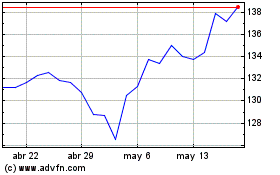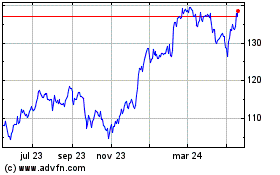- Even as outstanding mortgage debt hit an all-time high of
$13.8T in June, rising home prices outpaced that growth, driving
mortgage holder equity to its own new record high of $17.6T in Q2
2024
- Climbing equity has eased overall leverage in the market, with
total mortgage debt equivalent to 44.1% of underlying home values,
down from 44.6% in Q1 and the third lowest leverage ratio of the
past 20+ years
- Tappable equity – the amount a borrower can access while
maintaining a healthy 20% equity cushion – also hit a new peak in
June at $11.5T, a +4% gain from Q1 and +9.2% year over year
- 32M mortgage holders have at least $100K in tappable equity;
4.6M have at least $500K, and nearly 1.2M have $1M or more, with
higher equity holders tending to have lower first lien rates as
well
- Borrowers with 760+ credit scores hold two-thirds of tappable
equity; a similar share is held by those with sub-4% first lien
rates, an inherent incentive to use second lien debt to tap equity,
should the need arise
- Fewer than 325K homeowners are underwater nationwide,
representing just 0.60% of active mortgages, with another 4.2%
having less than 10% equity in their homes
- Texas, Florida, and Louisiana are worth watching as inventory
grows and home prices soften in some areas, increasing the number
of borrowers in negative equity positions
- Nationally, 84% of underwater mortgages were originated within
the past 3.5 years; that share climbs above 97% in markets where
prices have pulled back from recent highs
Intercontinental Exchange, Inc. (NYSE:ICE), a leading global
provider of technology and data, today released its August 2024 ICE
Mortgage Monitor Report, based on the company’s industry-leading
mortgage, real estate and public records data sets.
Though the ICE Home Price Index (HPI) has shown a general
slowdown in the rate of home price growth through June – and in
some locales, price declines driven by surplus inventory – mortgage
holders’ equity levels continue to hit new heights. As Andy Walden,
ICE Vice President of Research and Analysis, explains, there is
more outstanding mortgage debt today than at any point in history,
but at the same time, overall market leverage remains near all-time
lows.
“Outstanding mortgage debt, including both first and second
liens, hit an all-time high in June, but growth in home prices has
outpaced that gradual rise in debt,” said Walden. “Total cumulative
debt leverage – essentially a loan-to-value ratio for the entire
mortgage market – is equivalent to 44.1% of underlying home values,
the third lowest leverage ratio we’ve seen in the past 20-plus
years. Rising home prices have also continued to build the fortunes
of existing homeowners, pushing tappable equity – the amount a
mortgage holder can leverage while retaining a healthy 20% equity
cushion – to its highest level ever.”
Nine out of ten of mortgage holders (48.5M) have some degree of
tappable equity. A fair representation of the addressable market
for second lien lending, tappable equity continues to be held
primarily by higher credit score borrowers with low first lien
interest rates. Two-thirds of such equity is held by mortgage
holders with credit scores of 760 or higher, with a similar share
held by those with first lien rates below 4%.
Three out of five (32M) mortgage holders have at least $100K in
tappable equity; 4.6M have at least $500K, and 1.2M have $1M or
more. Higher equity levels tend to correspond with lower first lien
interest rates, as those borrowers, on average, were able to
capitalize on record low interest rates while also buying into the
market earlier at lower prices. The average first lien rate of
borrowers without tappable equity is approximately 5.5%, nearly a
full percentage point above those with up to $50K available to
borrow against (4.45%). Borrowers with $50-$199K to borrow against
have average first lien rates of just above 4%, while those with
$500K or more to borrow against have average rates of around
3.75%.
“Home equity lending has been sluggish since interest rates
began their climb higher early in 2022,” Walden said. “As the Fed
raised short-term lending rates, accessing equity became more
expensive for homeowners, evidenced by the anemic growth in such
lending despite record levels of available, tappable equity.
“Industry expectations that the Fed will soon begin easing
short-term rates could gradually change that dynamic, given the
more direct impact short term rates have on home equity rate
offerings, and lenders would do well to prepare. The ability to
originate and service home equity loans alongside first lien
mortgages will be key – to say nothing of using data-driven
portfolio analysis to identify potential second lien
customers.”
Fewer than 325K homeowners are underwater on their mortgages
nationwide, putting just 0.60% of active loans in a negative equity
position, with another 4.2% holding less than 10% equity in their
homes. That said, Texas, Florida, and Louisiana are worth watching
as inventory grows and home prices soften in some areas.
In Austin, for example, home prices are more than 15% off 2022
peaks, resulting in some 2.6% of mortgage holders owing more than
their homes are currently worth. Similarly, in San Antonio, 2.7% of
homes are underwater. Negative equity rates are also rising in
Florida, as Cape Coral, Lakeland, North Port and Jacksonville –
where inventories have surged and home prices are softening – have
all seen an increase in negative equity. The same is true of New
Orleans and Baton Rouge in Louisiana. Nationwide, 84% of underwater
mortgages were originated within the past 3.5 years; that share
climbs above 97% in areas like San Antonio, Austin, Cape Coral and
North Port, where prices have pulled back from recent highs.
Much more information on these and other topics can be found in
this month’s Mortgage Monitor.
About Mortgage Monitor
ICE manages the nation’s leading repository of loan-level
residential mortgage data and performance information covering the
majority of the overall market, including tens of millions of loans
across the spectrum of credit products and more than 160 million
historical records. The combined insight of the ICE Home Price
Index and Collateral Analytics’ home price and real estate data
provides one of the most complete, accurate and timely measures of
home prices available, covering 95% of U.S. residential properties
down to the ZIP-code level. In addition, the company maintains one
of the most robust public property records databases available,
covering 99.9% of the U.S. population and households from more than
3,100 counties.
ICE’s research experts carefully analyze this data to produce a
summary supplemented by dozens of charts and graphs that reflect
trend and point-in-time observations for the monthly Mortgage
Monitor Report. To review the full report, visit:
https://www.icemortgagetechnology.com/resources/data-reports
About Intercontinental Exchange
Intercontinental Exchange, Inc. (NYSE: ICE) is a Fortune 500
company that designs, builds, and operates digital networks that
connect people to opportunity. We provide financial technology and
data services across major asset classes helping our customers
access mission-critical workflow tools that increase transparency
and efficiency. ICE’s futures, equity, and options exchanges --
including the New York Stock Exchange -- and clearing houses help
people invest, raise capital and manage risk. We offer some of the
world’s largest markets to trade and clear energy and environmental
products. Our fixed income, data services and execution
capabilities provide information, analytics and platforms that help
our customers streamline processes and capitalize on opportunities.
At ICE Mortgage Technology, we are transforming U.S. housing
finance, from initial consumer engagement through loan production,
closing, registration and the long-term servicing relationship.
Together, ICE transforms, streamlines, and automates industries to
connect our customers to opportunity.
Trademarks of ICE and/or its affiliates include Intercontinental
Exchange, ICE, ICE block design, NYSE and New York Stock Exchange.
Information regarding additional trademarks and intellectual
property rights of Intercontinental Exchange, Inc. and/or its
affiliates is located here. Key Information Documents for certain
products covered by the EU Packaged Retail and Insurance-based
Investment Products Regulation can be accessed on the relevant
exchange website under the heading “Key Information Documents
(KIDS).”
Safe Harbor Statement under the Private Securities Litigation
Reform Act of 1995 -- Statements in this press release regarding
ICE's business that are not historical facts are "forward-looking
statements" that involve risks and uncertainties. For a discussion
of additional risks and uncertainties, which could cause actual
results to differ from those contained in the forward-looking
statements, see ICE's Securities and Exchange Commission (SEC)
filings, including, but not limited to, the risk factors in ICE's
Annual Report on Form 10-K for the year ended December 31, 2023, as
filed with the SEC on February 8, 2024.
Source: Intercontinental Exchange
Category: Mortgage Technology
ICE-CORP
View source
version on businesswire.com: https://www.businesswire.com/news/home/20240805794777/en/
ICE Media Contact Mitch Cohen mitch.cohen@ice.com +1
(704) 890-8158
ICE Investor Contact: Katia Gonzalez
katia.gonzalez@ice.com +1 (678) 981-3882
Intercontinental Exchange (NYSE:ICE)
Gráfica de Acción Histórica
De Jul 2024 a Ago 2024

Intercontinental Exchange (NYSE:ICE)
Gráfica de Acción Histórica
De Ago 2023 a Ago 2024
